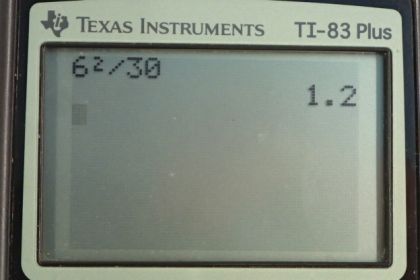Question
Some makes of older cars have 6.00-V electrical systems. (a) What is the hot resistance of a 30.0-W headlight in such a car? (b) What current flows through it?
Final Answer
a)
b)
Solution video
OpenStax College Physics for AP® Courses, Chapter 20, Problem 53 (Problems & Exercises)

vote with a rating of
votes with an average rating of
.
Calculator Screenshots
Video Transcript
This is College Physics Answers with Shaun Dychko. The voltage in the electrical system of this older car is six volts and the power consumed by the headlights is the voltage across them squared, divided by their resistance. We can rearrange this to solve for the resistance by multiplying both sides by R over P. On the left side we have R and on the right hand side we have V squared over P. Now this is called the hot resistance I suppose because it's the resistance when the headlights are on and they've been on long enough that they've become hot and we've learned earlier in this chapter that resistance changes with temperature. So this is going to be the resistance after the headlights have reached their usual hotter temperature after they have been on for a while. Initially their resistance would have been probably smaller but now that they're heated up, the resistance is higher because resistance is R naught times one plus the temperature coefficient of resistivity times the change in temperature. This is probably a positive number for materials like tungsten and whatever the filament is made out of inside the headlight. Well, anyway, so I did grasp it but back here we have six volts squared over 30 watts which gives 1.20 ohms. So, the next thing is the current through the headlights. So we can use power equals current times voltage then divide both sides by V and then switch the sides around and we solve for I as P over V. So that's 30 watts divided by 60 volts which gives 5.00 amps.
